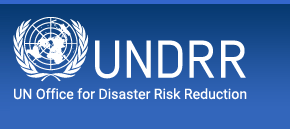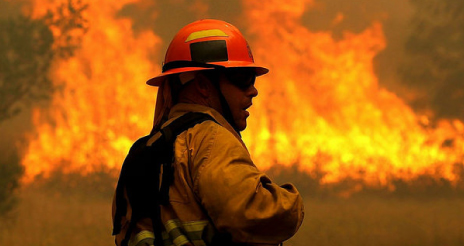- Our Mandate
- Mission and Objectives
- UNDRR in the UN
- Work Programme & Annual Reports
- Results Based System
- Work Partnerships
- Headquarters - Geneva
- SG-UN representatives for DRR
- Regional Office – The Americas and the Caribbean
- Head of the Regional Office – The Americas and the Caribbean
- What is Disaster Risk Reduction?
- What is the International Strategy?
- History of UNDRR
US wildfires set new record
By Denis McClean
GENEVA, January 7, 2016 - A new report from the US Department of Agriculture highlights the threat of wildfires to a warming, more drought-prone planet and the impact they can have on budgets for forest restoration.
Yesterday in Washington, Agriculture Secretary Tom Vilsack said that in 2015, wildfires burned a record 10,125,149 acres across the United States, surpassing the previous record set in 2006. In 2015, there were more than 50 fires that exceeded 50,000 acres each; of those, 20 fires exceeded more than 100,000 acres each. In 2015, more than 4,500 homes and other structures were destroyed by wildfires and a total of 13 wildland firefighters, including 7 U.S. Forest Service firefighters, lost their lives in the line of duty. Since 2000, fire seasons have grown longer, and the frequency, size and severity of wildland fires has increased. The 2015 fires stretched across federal, state and private land with Alaska, California, Oregon and Washington being especially hard hit. The cost of the Forest Service's wildfire suppression reached a record $243 million in a one-week period during the height of suppression activity in August. With a record 52 percent of the Forest Service's budget dedicated to fire suppression activities, compared to just 16 percent in 1995, the Forest Service's firefighting budget was exhausted in 2015, forcing the US Department of Agriculture to transfer funds away from forest restoration projects that would help reduce the risk of future fires. Mr. Vilsack noted that " We take our job to protect the public seriously, and recently, the job has become increasingly difficult due to the effects of climate change, chronic droughts, and a constrained budget environment in Washington. Congress must fix the fire budget to stop an ever-increasing amount of the operating budget going to fire suppression. Failing to do so will result in more deadly and devastating fires in the future.”
He added: “With a predictably long fire season on the horizon in 2016, lives, property and the future of our forests and grasslands hang in the balance. Congress must fix this issue once and for all."
In a statement, the Department of Agriculture, said: “The costs of wildfire preparedness and suppression now account for 76 percent of the Interior wildfire management program budget and, as in the case of the Forest Service, reduce the amounts of funds available for fuels management and restoration efforts. These activities are essential for reducing risks of catastrophic fires, increasing the resiliency of lands to recover from fire, and to protect communities and infrastructure.” UNDRR’s 2013 Global Assessment Report on Disaster Risk Reduction reported that the average global burnt area as detected by satellite sensors fluctuates between 3 million km² and 4.5 million km².
In recent years the extent of burnt areas in regions such as the western United States, south-east Australia and southern Europe has increased dramatically.Wild-land fire hazard is influenced by climate extremes as well as changes in land use and contribute to a depletion of natural capital in tropical forest ecosystems.
Follow the UNDRR news online:
 Now we have twitter account @UNDRR Américas y el Caribe
Now we have twitter account @UNDRR Américas y el Caribe
JOIN US!
Tweets por el @UNDRR Américas y el Caribe

 Wildfires burned over 10 million acres of land across the USA in 2015.
Wildfires burned over 10 million acres of land across the USA in 2015.